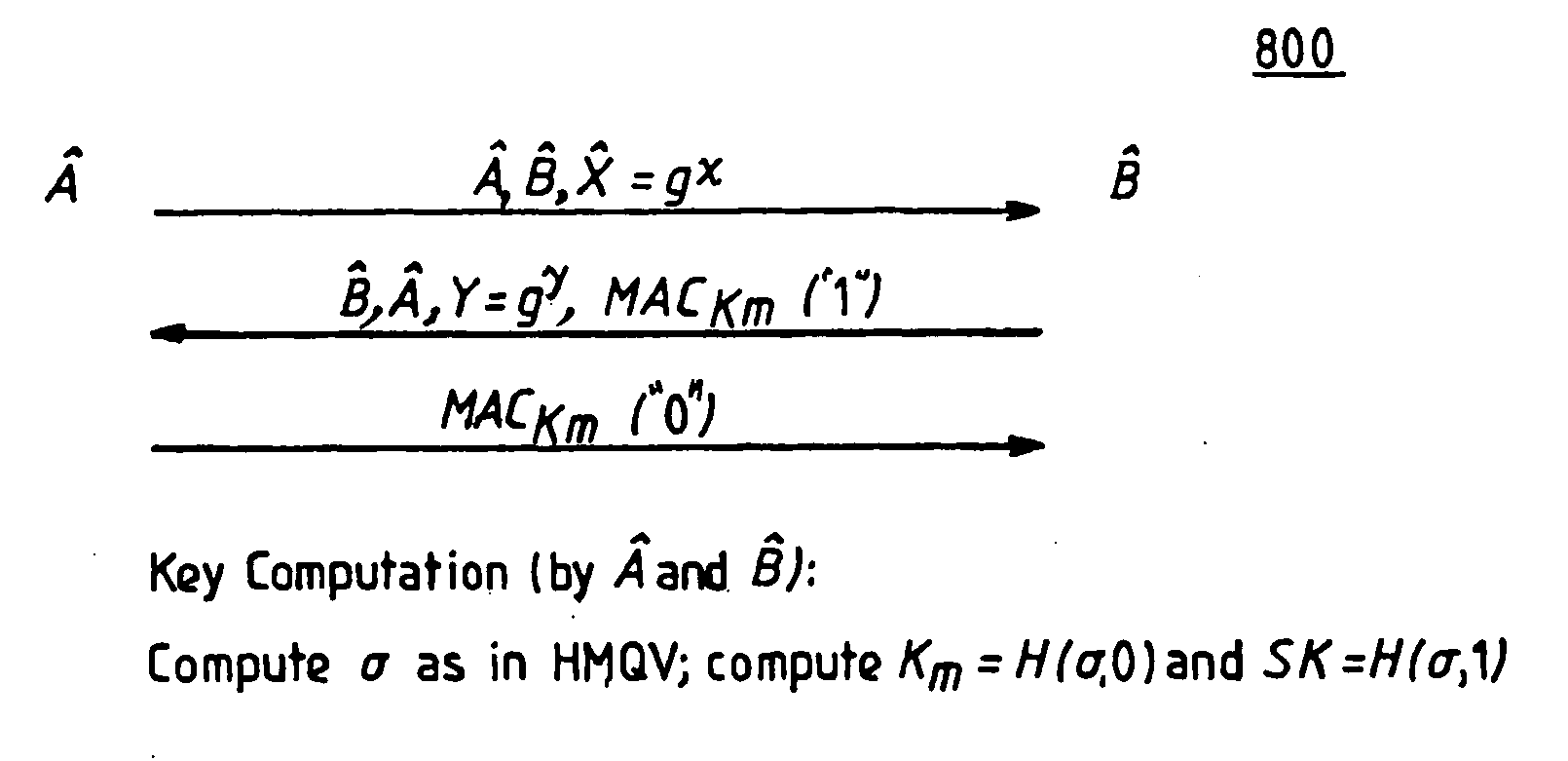Method and structure for challenge-response signatures and high-performance secure diffie-hellman protocols
a technology of challenge response and signature, applied in the field of signatures, can solve problems such as additional complexity, insufficient communication and computation, and inability to meet the requirements of a group exponentiation, and achieve the effects of reducing the number of signatures
- Summary
- Abstract
- Description
- Claims
- Application Information
AI Technical Summary
Benefits of technology
Problems solved by technology
Method used
Image
Examples
Embodiment Construction
[0032] Referring now to the drawings, and more particularly to FIGS. 1-11, wherein are shown exemplary embodiments of the methods and structures according to the present invention.
[0033] As a preliminary note on groups and notation, all the protocols and operations discussed herein assume a cyclic group G of order q, typically a prime number, generated by a generator g. The bit length of q is denoted by |q| (e.g., |q|=┌log2 q┐, meaning the logarithm of q to base 2, as rounded up to the nearest integer), and this quantity is used as an implicit security parameter. The parameters G, g, and q are assumed, for simplicity, to be fixed and known in advance to the parties, as is common in practice. Alternatively, one could include these values in certificates, etc.
[0034] The multiplicative representation of group operations is used herein, but the treatment is equally applicable to additive groups, such as elliptic curves, or any other algebraic groups or specific groups, finite fields, ...
PUM
 Login to View More
Login to View More Abstract
Description
Claims
Application Information
 Login to View More
Login to View More - R&D
- Intellectual Property
- Life Sciences
- Materials
- Tech Scout
- Unparalleled Data Quality
- Higher Quality Content
- 60% Fewer Hallucinations
Browse by: Latest US Patents, China's latest patents, Technical Efficacy Thesaurus, Application Domain, Technology Topic, Popular Technical Reports.
© 2025 PatSnap. All rights reserved.Legal|Privacy policy|Modern Slavery Act Transparency Statement|Sitemap|About US| Contact US: help@patsnap.com



